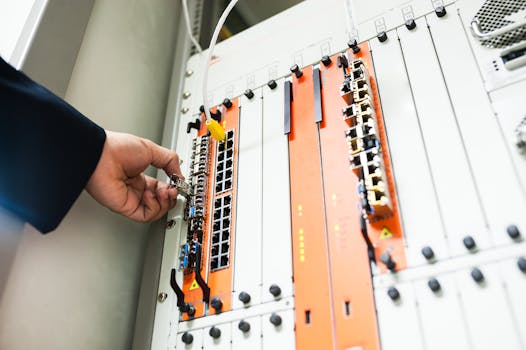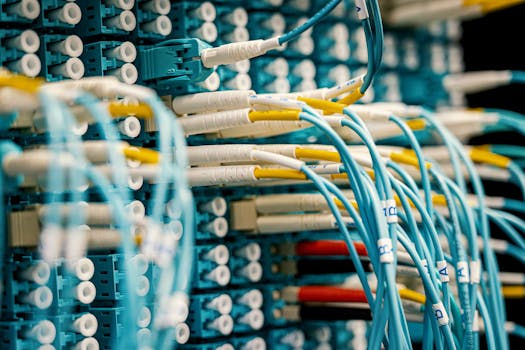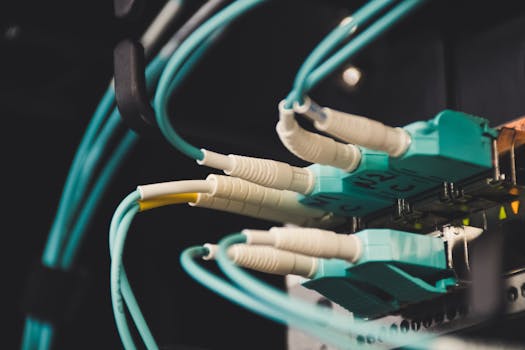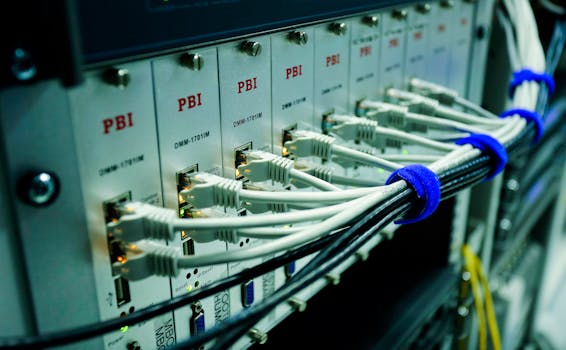Flexibility Meets Speed: The Evolution of Data Transmission Technology Using Glass Fibers

Flexibility Meets Speed: The Evolution of Data Transmission Technology Using Glass Fibers
Flexibility Meets Speed: The Evolution of Data Transmission Technology Using Glass Fibers has been a game-changer in the world of telecommunications. The use of glass fibers in data transmission has revolutionized the way we communicate and access information. With its flexibility and speed, glass fiber technology has become a crucial component of modern telecommunications.
The history of glass fiber technology dates back to the 1950s, when the first glass fiber cables were developed. However, it wasn’t until the 1970s that the first commercial glass fiber cables were introduced. Since then, the technology has evolved rapidly, with significant advancements in the 1990s and 2000s. Today, glass fiber technology is used in a wide range of applications, from telecommunications and internet connectivity to medical and industrial uses.
The Principle of Glass Fiber Technology

So, how does glass fiber technology work? The principle is based on the concept of total internal reflection. When a light signal is transmitted through a glass fiber, it bounces off the cladding, which is the outer layer of the fiber, and stays within the core, which is the inner layer. This allows the signal to travel long distances without significant degradation. The core and cladding are made of different types of glass, with the core having a higher refractive index than the cladding.
The light signal is transmitted through the fiber using a laser or light-emitting diode (LED). The signal is then received at the other end of the fiber using a photodetector, which converts the light signal back into an electrical signal. This process allows for the transmission of data at incredibly high speeds, making glass fiber technology ideal for applications that require fast and reliable data transfer.
Advantages of Glass Fiber Technology

So, what are the advantages of glass fiber technology? One of the main advantages is its speed. Glass fiber technology allows for the transmission of data at speeds of up to 100 Gbps (gigabits per second), making it ideal for applications that require fast and reliable data transfer. Another advantage is its flexibility. Glass fibers are thin and lightweight, making them easy to install and maintain. They are also resistant to electromagnetic interference (EMI), which can cause errors and downtime in traditional copper-based systems.
Additionally, glass fiber technology is more secure than traditional copper-based systems. Because the signal is transmitted through light, it is difficult to tap into the signal without being detected. This makes glass fiber technology ideal for applications that require high levels of security, such as financial transactions and sensitive data transfer.
Applications of Glass Fiber Technology

So, what are the applications of glass fiber technology? One of the main applications is in telecommunications. Glass fiber technology is used in a wide range of telecommunications applications, from internet connectivity and phone networks to television and radio broadcasting. It is also used in medical applications, such as in medical imaging and telemedicine.
In addition, glass fiber technology is used in industrial applications, such as in manufacturing and transportation. It is also used in military applications, such as in communications and surveillance systems. The use of glass fiber technology in these applications has improved the efficiency and reliability of data transfer, and has enabled the development of new technologies and services.
Conclusion

In conclusion, the evolution of data transmission technology using glass fibers has revolutionized the way we communicate and access information. With its flexibility and speed, glass fiber technology has become a crucial component of modern telecommunications. Its advantages, including its speed, flexibility, and security, make it ideal for a wide range of applications, from telecommunications and medical uses to industrial and military applications. As the demand for fast and reliable data transfer continues to grow, the use of glass fiber technology is expected to play an increasingly important role in shaping the future of telecommunications and beyond.




